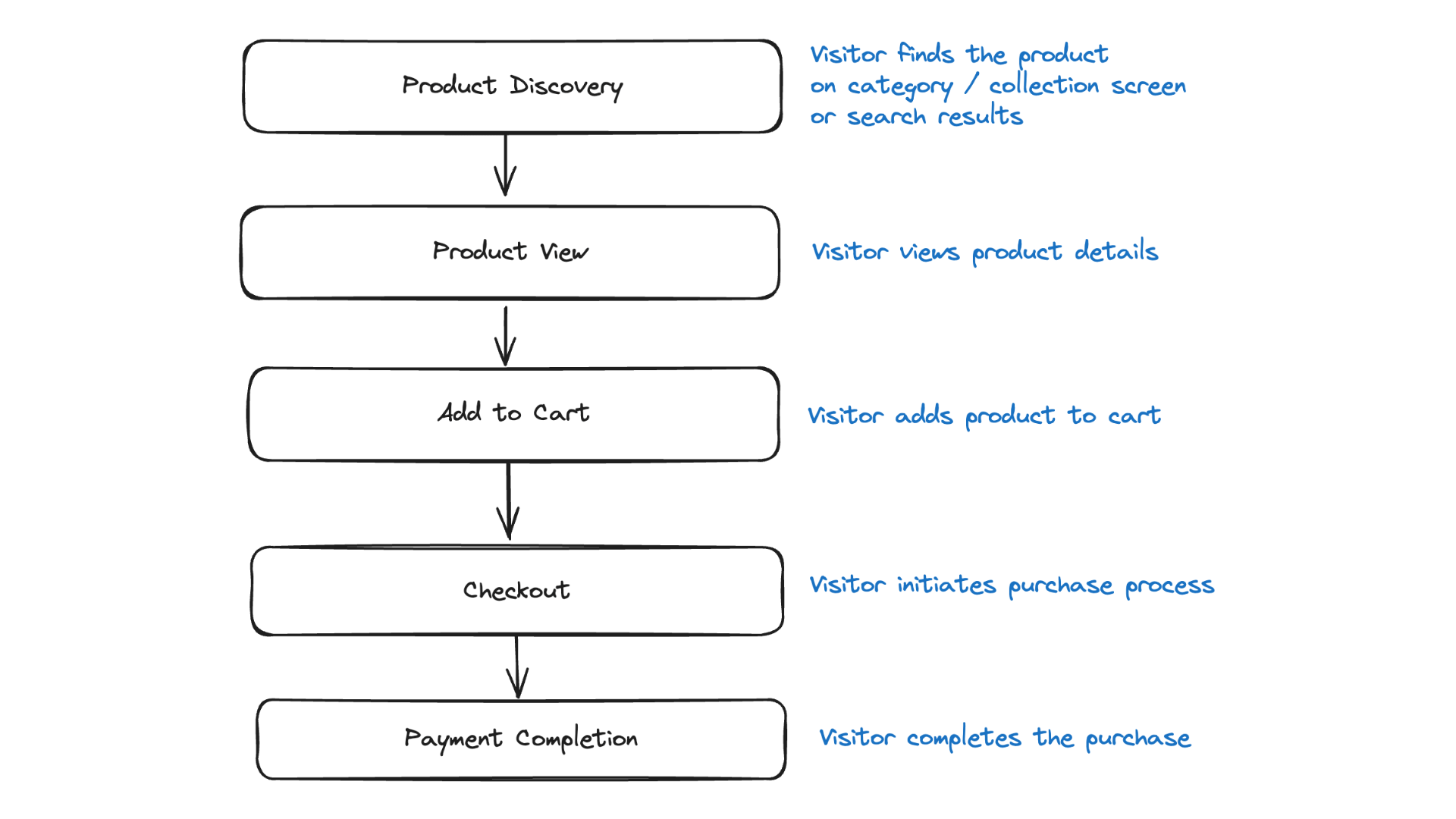How Do E-commerce Platforms Define an 'Activated User'?
Activation rate in e-commerce is generally the same as e-commerce conversion rate (ECR). This rate is the percentage of visitors who complete a purchase, transitioning from casual browsers to 'activated' customers.
However, in order to understand levers to improve the ECR, it's crucial to consider the entire funnel leading to this point. Let's explore this journey from initial product interest to final purchase.

The Funnel Leading to Activation:
The activation funnel in e-commerce includes several key stages:
- ☞ Product Discovery: The stage where a visitor first encounters a product.
- ☞ Viewing Product: When a visitor shows interest by viewing product details.
- ☞ Adding to Cart: Indicates a higher level of interest, as the visitor adds a product to their cart.
- ☞ Proceeding to Checkout: The critical step where a visitor initiates the purchase process.
- ☞ Payment and Purchase Completion: The final stages where payment details are entered and the purchase is confirmed.
Exploring Different Levers for Each Stage:
To enhance the overall activation rate, different strategies or 'levers' can be employed at each funnel stage. We will explore these strategies in subsequent skilletons, that are designed to guide users through the funnel more effectively, thereby increasing the likelihood of purchase completion.
What is important to understand at this point is this: instead of seeking catch-all tactics of improving conversion rate, we should always try to understand the specific friction points and opportunities with respect to the funnel, map them to a specific stage, and only then explore relevant solutions.
Next Step:
Now that we've defined what constitutes an 'Activated User' in e-commerce as well as the funnel steps, the next concept will examine the specific metrics that measure activation in this sector.